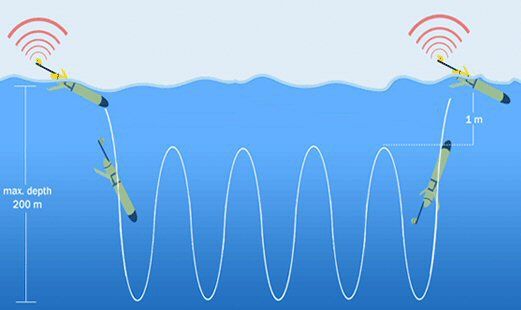TSAMTO, September 22. In St. Petersburg, as part of the 16th International Exhibition "NEVA-2021", the first presentation of wave and underwater gliders developed by the corporation's partner, the St. Petersburg State Marine Technical University, took place at the USC stand on September 21.
The head of USC Alexey Rakhmanov got acquainted with the samples of underwater work equipment presented at the stand and took part in the meeting of the expert group of the scientific and technical council of the corporation dedicated to the development of this direction.
Gliders are robotic complexes that can be used for oceanological, hydrophysical, meteorological and environmental research and monitoring. They, like self-propelled buoys, are able to explore the depths and transmit information to the monitoring center on the shore. A wave glider (length 1.4 m, width 0.8 m) can also act as a gateway-repeater of signals from an underwater "colleague" (length 3.0 m, width taking into account the wingspan – 1.1 m) and to it.
At the moment, there are projects of various versions of gliders (with different payloads) - depending on the goal.
At the same time, as the tests that have just passed have shown, the use of solar panels from the company "Havel" (also participating in the project of creating robotic complexes) increases the autonomy of gliders and expands the possibilities for using additional payload in each version.
Evaluating the presented samples of gliders, Alexey Rakhmanov noted that currently such devices can be used to solve a wide range of tasks – both military and research. And increasing their autonomy and payload can further expand the scope of their application and attractiveness for potential customers.
The message is posted in open access on the website of JSC "USC".

